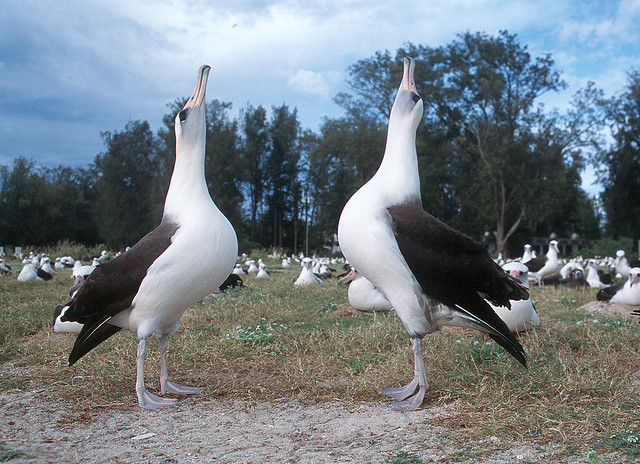
Tips on teaching your dog or puppy to sit:
When teaching your dog to sit, hold your hand
high over its head with a reward{food or toy} in it. Your dog
will look up at the reward. Use your other hand
to gently push the dog's behind into a sitting
position, and say in a clear, firm tone, "
SIT"
while still holding the reward in the air above
the dog's head. When your dog sits, give him the
treat and verbally praise him. Do not allow your
dog to jump up and grab the reward out of your
hand. Say firmly, "
NO." You will have to repeat
this over and over. Eventually your dog will
associate sitting with the reward and will sit
without your assistance.
Remember the training
sessions should be short but frequent. Repeat
this method periodically throughout the day. If
you get frustrated, stop and try again later.

It is usually best to teach your dog to sit before you teach it to stay. The reason is your dog will have an easier time staying if it is in a sitting position. After your dog has the sitting command down, and has been correctly sitting for a couple of days without assistance, it is time to teach your dog to stay and come. Tell your dog to sit. Have two rewards in your hand. After your dog sits, give it one of the rewards.
Hold your empty hand up like a stop sign in front of your dog's face and back up slowly saying "STAY" clearly and firmly. Be sure to stay
facing your dog and remain looking at him. Go a
short distance and say with some enthusiasm,
"
COME." When your dog comes to you reward
him again. If your dog gets up and runs to you
without the "
COME" command, say "
NO" and
start all over again.
Remember to verbally praise
as well as provide a food reward when he gets a
new command correct. Start off only backing up
a short distance from your dog. As he begins to
understand what you want of him, you may back
farther away and eventually you may be able to
walk out of sight and have your dog still stay
until he hears the "COME" command.
Remember
to be consistent and stop if you become
frustrated. Your dog can sense frustration and it
will confuse him. They want to please you. If
they sense your frustration, they may learn to
dislike the training sessions as they associate
them with a negative feeling coming from you.
 After successfully teaching your dog to sit, stay, and come—without assistance, it's time to teach him to lie down on command. Tell your dog to sit. Show him the reward you have in your hand. Hold the reward up and then bring it down in front of the dog to the floor and say "
After successfully teaching your dog to sit, stay, and come—without assistance, it's time to teach him to lie down on command. Tell your dog to sit. Show him the reward you have in your hand. Hold the reward up and then bring it down in front of the dog to the floor and say "DOWN" in
a firm clear voice, you can also help the dog by pushing its back down to a lying position . Only give the reward if he lies
down to reach it. Do not give it to him if he
stands up to reach the reward. Again repeat this
throughout the day as much as possible, keeping
sessions short and frequent.
Each training session should include any new
commands you are trying as well as old
commands the dog has already learned—so the
dog does not forget them. Always be consistent.
Important: If you become frustrated, stop and
try again later.
Staying positive and taking the time to play with
your dog during sessions will teach him that
following commands is happy and rewarding.
Tips on teaching your dog to heel .
Note: A puppy/dog that goes on daily pack
walks is easier to train as it will be calmer
and less anxious.


































